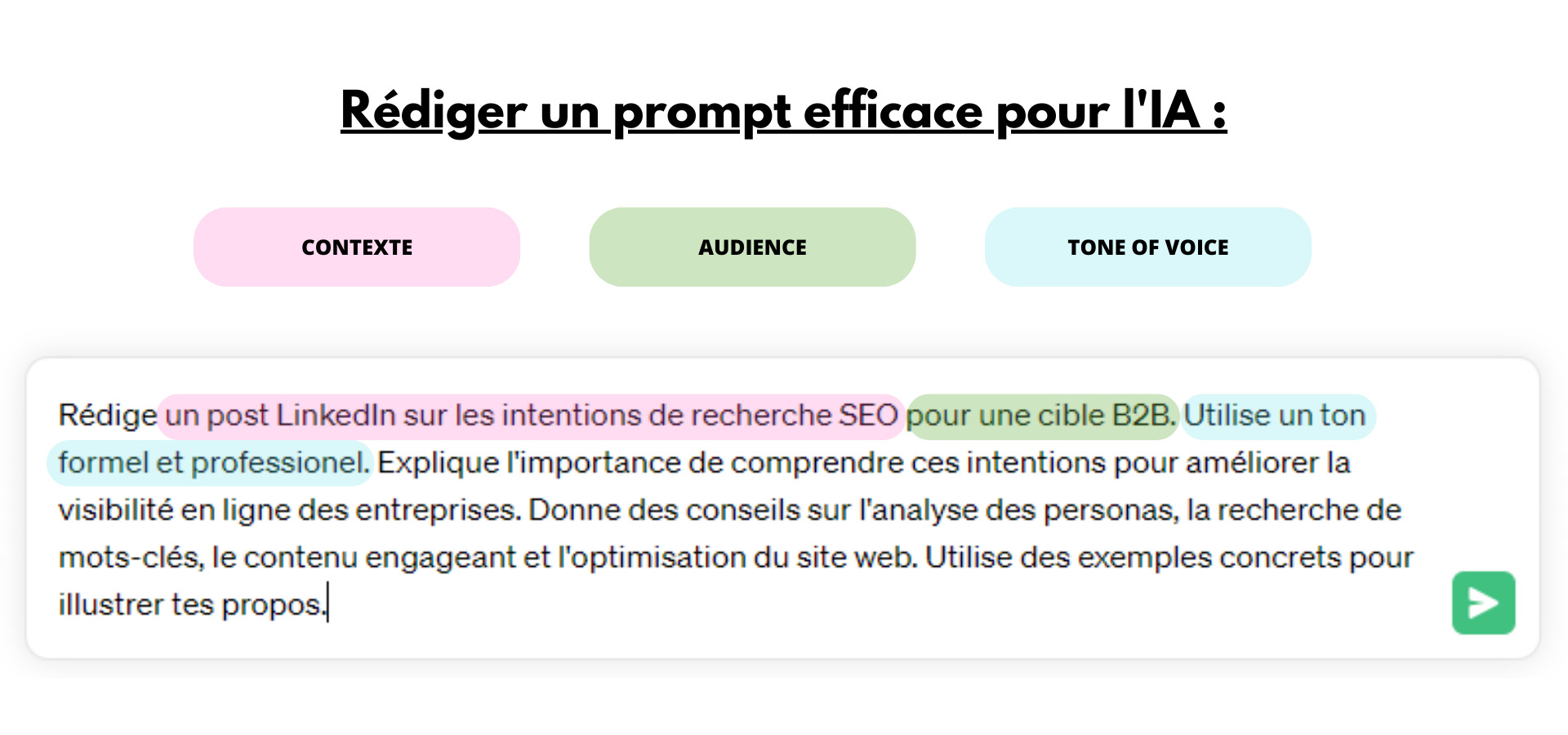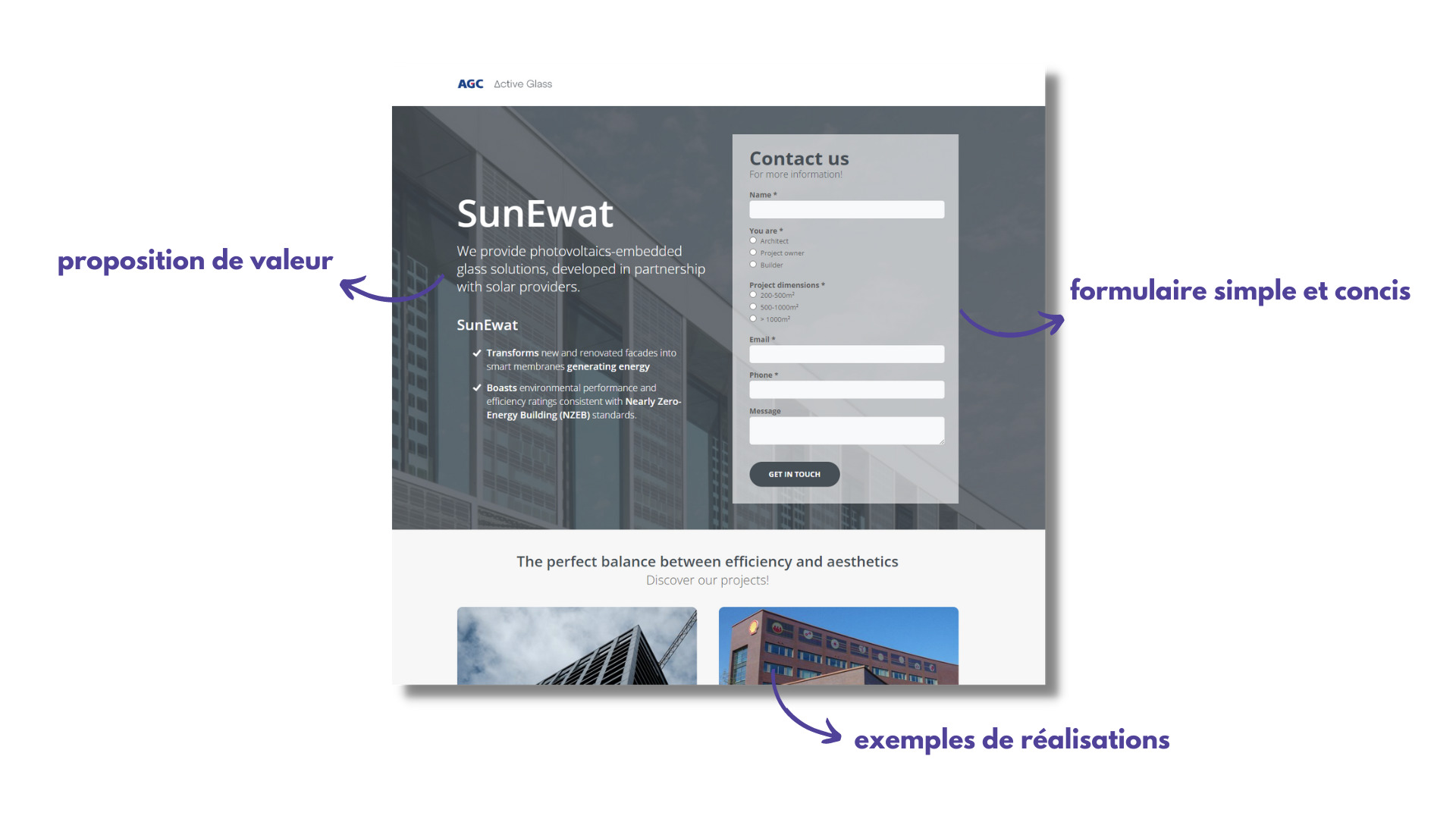Conversion Rate Optimisation (CRO) is a key strategy for businesses in all sectors that want to maximise their conversion rate and optimise their marketing efforts. In short, it applies to any profit-making business!
It is the set of methods designed to optimise your conversion rate by combining marketing, UX design, development, data analysis and A/B testing techniques. CRO helps to improve website performance and increase conversions. At a time when AI is everywhere, it is crucial for businesses to learn how to use it to their advantage! Discover the key stages of CRO according to our experts, as well as our advice and best practices for harnessing the potential of AI to achieve your conversion targets.
1. Optimising content for CRO
Optimising content is a crucial part of CRO. To begin with, identify the pages on your website that have a high conversion potential, such as product pages or landing pages. The aim is to encourage your users to perform the actions you expect of them. So analyse these pages and make sure that the content is clear, convincing and meets users’ needs. To do this, here are the questions to ask yourself:
- What is the objective of my page? The rule to follow: 1 page = 1 objective.
- Is my content clear? Use the 5-second rule: is it immediately clear what the page is about?
- Is my page convincing? Do people quickly understand what action is expected?
- Does my content meet users’ needs and answer their questions? To do this, you’ll need to play detective on the SERP to identify search intentions.
Use catchy titles and persuasive descriptions. A number of AI-enabled tools such as Semji, Copy.ai and Headline can help you generate these titles and descriptions. Finally, create relevant calls to action. CTA buttons should be clearly visible and conversion-oriented.
Highlight the unique benefits and values you offer. Integrate your value proposition coherently into your content. It should appear in your “hero section”, but also permeate the whole of your site to maintain consistency. We also recommend avoiding overly technical jargon if your audience is not used to it, so as not to lose your visitors.
Finally, visual elements, such as quality images and videos, can make a significant contribution to making your content more attractive. Don’t hesitate to include testimonials and authentic customer reviews to boost user confidence. Numerous plugins exist on CMS such as WordPress or Drupal to integrate these reviews automatically.
2. Segmentation for better personalisation
An in-depth understanding of your target audience, their needs and motivations, is essential to optimising your content. Segmentation is a key approach to getting the right message to the right person at the right time. To begin with, you need to analyse the data available on your audience (using GA4, your CRM or platforms such as Meta, for example). Next, divide your audience into homogeneous segments based on relevant criteria such as geographical location, age, gender, interests or purchasing behaviour. Tools such as SparkToro or Crystal can help you refine your targets and understand their behaviour.
Once you have identified these segments, personalise your content according to the characteristics of each group. To take a concrete (and slightly stereotypical) example, if one of your segments is Gen Z, you can adopt an informal tone and use acquisition channels such as TikTok or Snapchat. On the other hand, for an older market segment, you can opt for a formal tone and use more traditional communication channels such as email or phone calls.
How can you use conversational artificial intelligence to tailor your communication to each segment?
If you use AI tools to help you write your communications, clearly state in your scripts which target the message is aimed at and ask the AI to adapt the tone of voice.

Automation, the key to CRO marketing
And of course, all this needs to be automated to save you time and maximise your ROI. The use of marketing automation tools and customer relationship management (CRM) platforms such as HubSpot (which combines the two) is essential for setting up personalised marketing campaigns for each segment. With these tools, you can automate the sending of emails containing special offers corresponding to the interests of each group, create lead nurturing strategies, or display targeted product recommendations on your website based on previous buying behaviour.
Segmentation also enables you to send the right message at the right time, based on the different stages of the customer journey. When a user visits your website for the first time, present them with introductory content so that they get to know your brand. Then guide them towards more detailed information as they progress through the customer journey. We’ll develop this aspect in a later article.
3. User experience (UX) at the heart of design development
If the bounce rate on your home page exceeds 50%, this most likely means that your hero section is not sufficiently engaging. User experience and design are key elements in increasing your engagement rate and, consequently, your conversions. In fact, an attractive design and a well thought-out UX help to create a positive experience for users, which encourages them to stay on your site longer and carry out conversion actions.
First and foremost, the design of your website creates the first impression with visitors. An aesthetically pleasing and professional design generates trust and interest among users. A well-designed site, with a clear interface and intuitive navigation, enables visitors to find the information they are looking for quickly, reducing friction and increasing the likelihood of conversion.
How do you analyse consumer behaviour?
When it comes to analysing the behaviour of your website visitors, Hotjar is your best friend! The platform also has built-in AI so you can conduct automated surveys of your visitors. In other words, collect as much data as possible to evaluate your UX. You can also use GA4, Page Speed Insights and Google Search Console to identify any problems that may be appearing on your pages.
So make sure that your website is easy to navigate, quick to load and responsive on all devices.
Mobile first !
Think about your wireframes for the mobile version first, because the challenges are different to those for the desktop version. The limited space on a “small screen” means that you have to limit yourself to the essentials and structure the information on your site clearly and briefly. What’s more, certain functions are not available on the desktop. So make sure you optimise your site for mobile, and then adapt the desktop version, not the other way round.
Finally, optimise your contact or registration forms by making them concise and easy to fill in. Reduce distractions and always highlight your value proposition (USP).

4. Data analysis for informed decisions
The analysis of quantitative data is essential for CRO, as it enables you to make informed decisions to improve the performance of your website.
How do you calculate the conversion rate?
To measure the success of your CRO efforts, calculate your conversion rate. The formula is simple: it’s the percentage of visitors who carry out a desired action in relation to the number of users who have seen your page or advertisement. On average, the conversion rate in B2B is around 2 to 5%, while in B2C it is generally higher, between 5 and 10%.
To monitor the performance of your CRO strategy, here are a few key KPIs to keep an eye on via Google Analytics or another analysis tool:
- Conversion rate: Calculate the overall conversion rate as well as the specific conversion rates for each stage of the customer journey (awareness, consideration, decision).
- Bounce rate: Measure the percentage of visitors who leave your site after visiting a single page. A high bounce rate (> 50%) may indicate problems with engagement or content relevance.
- Average time spent on site: Track how long visitors stay on your site. A high average time (this can be considered high from 1 minute upwards, depending on the page and its objective) may indicate greater engagement and a better user experience.
- Basket abandonment rate: If you have an online shop, keep an eye on the percentage of visitors who add items to their basket but don’t make the final purchase. This may indicate friction or obstacles in the purchasing process.
- Conversion rates by channel: Analyse the conversion rates for each source of traffic (organic, paid, social networks, etc.) to identify the best-performing channels and allocate your resources accordingly.
Once you have access to this quantitative data, it is important to format it in a clear and understandable way. Tools such as Looker Studio can be used to visualise the data and create interactive dashboards. These dashboards allow you to group relevant data together and create graphs, tables and other highly visual elements. The aim is to provide clear insights at a glance, facilitating rapid, informed decision-making.
How often you should analyse your dashboards depends on the size of your business and the speed at which data changes. In general, it is recommended that you consult your dashboards regularly, at least once a week, to detect trends and anomalies quickly. If you notice unsatisfactory performance or opportunities for improvement, you should adapt your CRO strategy accordingly. Be careful, however, never to make too many changes at once, as you run the risk of no longer being able to identify what is really working and what is not.
In short, having an in-depth understanding of your data allows you to make strategic decisions based on hard facts rather than guesswork. It helps you identify opportunities for optimisation, adjust your content and user experience, test new ideas and measure the impact of these changes. By continuing to analyse and iterate on the data, you can gradually improve your conversion rate and achieve your business goals.
A/B testing to optimise variations
A/B testing is a key method for identifying winning strategies in a market. This approach is intrinsically linked to each of the CRO stages mentioned above. And yes, in each market segment, it’s important to test different possibilities for improving content and user experience. For example, you can test different headlines, calls to action, images or layouts to see which variations generate the best results in terms of conversion rates. There are many A/B testing tools that make use of AI. As we’re a friendly bunch, we’d like to share with you a few that our experts use regularly: Optimizely, Hubspot and Unbounce.
A/B testing, combined with data analysis, gives you concrete, valuable information about the performance of each variation, enabling you to make decisions based on tangible evidence rather than conjecture. All this information gives you a better understanding of your audiences, their preferences and their behaviour. So you can adapt your messages and content accordingly.
What’s more, A/B testing can be applied at every stage of the customer journey. You can test different approaches to raise awareness, evaluate options and persuade users to take action. For example, you can test different promotional offers or different stages of a registration form to optimise conversion rates at each stage of the customer journey.
Conclusion
Conversion Rate Optimisation (CRO) is an iterative process that aims to optimise your content and user experience to increase your conversion rates. By using techniques such as segmentation, user experience optimisation and constant testing, you can identify winning strategies to improve your website’s performance and maximise your results.
Start putting these strategies into practice today and watch your conversion rate improve over time!

Meticulous and perfectionist, Céline specializes in the creation of SEO-oriented content. But these are not her only assets! She also puts her creativity at the service of our Social Media Strategy team to create ultra-targeted campaigns designed to convince and convert.



